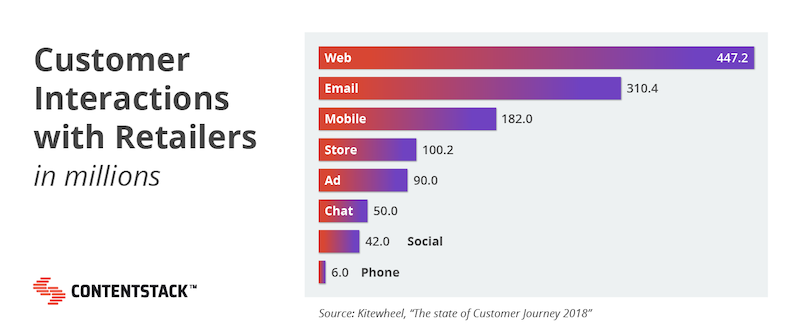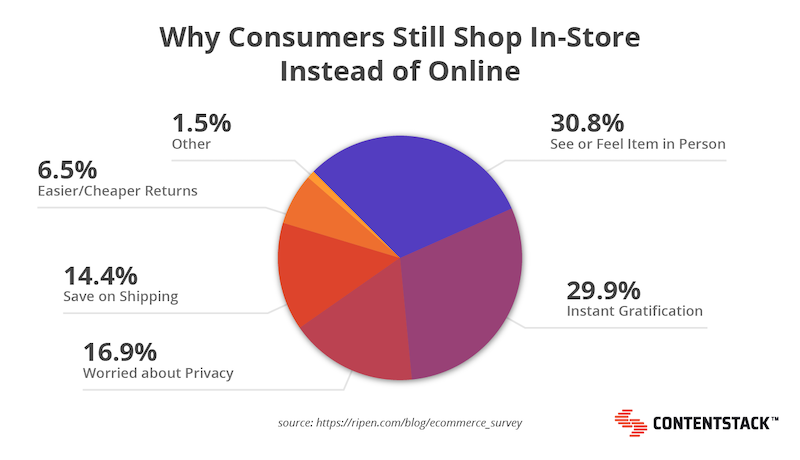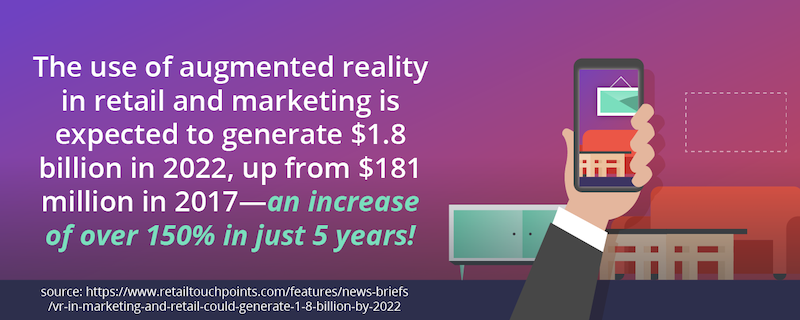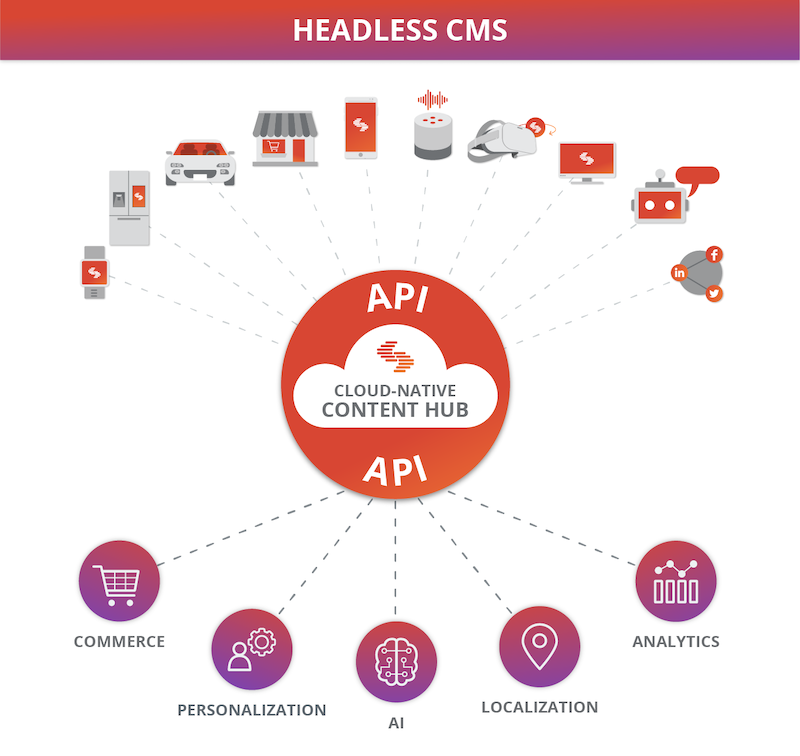La technologie omnicanale dont vous avez besoin pour réussir sur un marché de vente au détail fragmenté

Quel est le point commun entre Barack Obama et Mark Zuckerberg ? Les deux personnes qui réussissent s'en tiennent à un code vestimentaire quand vient le temps de se préparer pour la journée à venir. Pourquoi? Pour aider à éliminer la fatigue décisionnelle.
La fatigue décisionnelle est un épuisement de l'énergie et de la concentration qui résulte de la prise de décisions, grandes et petites, tout au long de la journée.

Au fil du temps, la fatigue décisionnelle conduit à une mauvaise prise de décision - et c'est pourquoi vous devez vous en inquiéter. En tant que décideur dans le secteur de la vente au détail, vous avez probablement commencé à ressentir de la fatigue décisionnelle bien avant même de savoir que cela avait un nom. Dans le marché actuel, les options de canal se fragmentent chaque jour. Les options semblent presque infinies lorsque vous passez d'une option à l'autre. C'est comme si vous n'aviez jamais assez de temps ou de budget pour rester sur un assez longtemps pour le faire tenir.
Et si nous vous disions que la meilleure façon de gérer de nombreux canaux est de les gérer tous ? Continuez à lire pour trouver une solution qui vous aidera à naviguer sur le marché fragmenté de la vente au détail tout en restant compétitif, agile et respectant votre budget.
Le défi: la variété des canaux continue de diviser le marché de Vente fragmenté
Vous saviez déjà que vous aviez de nombreux points de contact avec les consommateurs sur tous les canaux, mais saviez-vous que le commerce de détail possède spécifiquement l'un des mélanges de canaux les plus diversifiés de tous les secteurs ?

De plus, le nombre d'interactions clients entre ces canaux ne cesse de croître. La plate-forme d'analyse Client Kitewheel a constaté que les interactions au sein de son outil avaient triplé de 2014 à 2017 dans tous les secteurs. Dans le commerce de détail, les interactions ont augmenté de 93 %.
Il n'est donc pas surprenant que l'un des défis les plus importants rencontrés par les spécialistes du marketing lors de la création d'un parcours client intégré soit le nombre de points de contact client (pour 46 % des répondants) et l'incapacité à unir toutes les données que les spécialistes du marketing collectent à chacun de ces points de contact ( pour 43% des répondants).
Comme si suivre les points de contact numériques n'était pas assez compliqué, les expériences en magasin ne peuvent pas non plus être laissées de côté. S'il ne fait aucun doute que le commerce électronique se développe à un rythme effarant, la majorité des ventes au détail aux États-Unis (92 %, en fait) ont toujours lieu en personne.

Que doit faire une entreprise lorsqu'il s'agit de rivaliser et de rester dans le noir sur un marché de détail de plus en plus rapide et fragmenté ? Poursuivre les éléments critiques de la technologie omnicanal qui leur permettent de rationaliser leur stratégie malgré le marché de détail fragmenté.
La solution: utiliser la Technologie omnicanale pour Aide à reconstituer un marché de Vente fragmenté
Essayez ces technologies omnicanales de pointe pour transformer votre modèle commercial et tirer parti des opportunités émergentes.
Les chatbots permettent un Service client infini
Les chatbots sont des programmes informatiques qui utilisent le traitement du langage naturel (TAL) et l'intelligence artificielle (IA) pour répondre à des questions et demandes numériques simples posées par des humains. Ils gagnent en popularité dans l'espace de vente au détail pour une bonne raison. Pour les marques disposant de divers points de contact de commerce électronique, les chatbots sont un outil omnicanal éprouvé pour fournir un service client personnalisé et à la demande 24 heures sur 24.
Si l'on considère que les chatbots vont gérer 85 % des interactions avec les clients et ne nécessitent presque aucune intervention d'un agent humain d'ici la fin de 2020, qu'est-ce qui vous empêche de poursuivre cette stratégie de vente au détail omnicanale ?
La réalité augmentée renforce l'engagement des consommateurs
La réalité augmentée (AR) permet aux acheteurs d'utiliser les caméras de leurs appareils intelligents pour superposer des éléments numériques sur le monde physique qui les entoure.
Les détaillants omnicanaux peuvent se tourner vers la marque numérique et physique IKEA pour un exemple de la façon dont les entreprises peuvent mettre en œuvre la réalité augmentée pour impliquer plus profondément les consommateurs dans leurs offres de produits et leur expérience numérique. Pour ce faire, IKEA active la RA dans son application, que les acheteurs peuvent utiliser pour « placer » des produits chez eux avant de faire un achat.
AR fait des vagues dans le commerce électronique. Il existe de nombreux outils sur le marché (IKEA utilise ARKit) pour les marques qui souhaitent profiter de l'opportunité commerciale omnicanale.

Le Marketing de proximité utilise la Technologie des smartphones pour encourager les interactions en magasin
Le marketing de proximité consiste à utiliser les données de localisation pour communiquer avec les consommateurs via leurs appareils intelligents. La première étape pour activer le marketing de proximité consiste à placer des balises et des capteurs autour d'un magasin physique. Ensuite, lorsque les acheteurs potentiels sont à portée de ces appareils et peuvent identifier la personne par leur lien avec la marque (cela peut se faire via les réseaux sociaux, en étant connecté à l'application de la marque, etc.), une alerte personnalisée est envoyée à leur smart appareil.
Bien que cette méthode de marketing puisse sembler un peu "effrayante", soyez assuré que les consommateurs doivent consentir à ce que vous rassembliez leurs données et suiviez leur appareil, ce qui signifie qu'ils espèrent que vous serez en mesure de mettre en œuvre cette stratégie et de vous rendre au centre commercial. un peu plus valable.
La gestion de juridique sans tête permet la distribution de juridique et de Produit omnicanal
Le commerce électronique est peut-être l'un des secteurs où la distribution omnicanale rationalisée est la plus nécessaire. Non seulement vous devez proposer votre contenu et vos produits aux bons consommateurs, sur les bons canaux et dans le bon contexte, mais vous devez également vous assurer que toutes vos informations restent à jour à mesure que l'emplacement, la disponibilité et d'innombrables autres variables changent. .
Le problème est que la plupart des entreprises de commerce électronique utilisent des plates-formes traditionnelles et monolithiques de gestion de contenu et de produits qui ont chacune des bases de données distinctes et ne communiquent pas bien entre elles. Cela signifie qu'ils se retrouvent avec des plates-formes distinctes pour chaque application, site Web, chatbot, etc. La ressaisie manuelle et l'optimisation des données dans chacune de ces plateformes à chaque fois qu'elles changent est une activité chronophage importante pour les marques qui doivent évoluer pour suivre la concurrence.
Mais un système de gestion de contenu (CMS) sans tête consiste en une architecture moderne et découplée qui fournit du contenu à partir d'un référentiel principal central à l'aide d'interfaces de programmation d'application (API). Cette approche d'architecture découplée signifie que vous pouvez créer du contenu et des informations sur les produits une seule fois et stocker le contenu et les informations sur les produits dans des blocs faciles à chercher, exécuter via des applications d'optimisation et distribuer de manière transparente le contenu sur plusieurs canaux.

Besoin de remplir du contenu et des produits sur une nouvelle application mobile, un site Web ou une base de données de haut-parleurs intelligents ? C'est aussi simple que de réutiliser le contenu que vous avez déjà stocké dans votre CMS sans tête !
Trouvez votre chemin dans le marché de Vente fragmenté
La diversité des canaux peut fragmenter le marché de la vente au détail, mais elle ne doit pas nécessairement fragmenter votre équipe ou la réussite de votre entreprise. Investissez dans une technologie omnicanale comme les chatbots, la réalité augmentée et le CMS sans tête pour mettre en place une stratégie qui vous permettra de traverser le marché fragmenté du commerce de détail, vous permettra de répondre aux demandes des consommateurs et de vous démarquer de la concurrence.
À propos de Contentstack
The Contentstack team comprises highly skilled professionals specializing in product marketing, customer acquisition and retention, and digital marketing strategy. With extensive experience holding senior positions at renowned technology companies across Fortune 500, mid-size, and start-up sectors, our team offers impactful solutions based on diverse backgrounds and extensive industry knowledge.
Contentstack is on a mission to deliver the world’s best digital experiences through a fusion of cutting-edge content management, customer data, personalization, and AI technology. Iconic brands, such as AirFrance KLM, ASICS, Burberry, Mattel, Mitsubishi, and Walmart, depend on the platform to rise above the noise in today's crowded digital markets and gain their competitive edge.
In January 2025, Contentstack proudly secured its first-ever position as a Visionary in the 2025 Gartner® Magic Quadrant™ for Digital Experience Platforms (DXP). Further solidifying its prominent standing, Contentstack was recognized as a Leader in the Forrester Research, Inc. March 2025 report, “The Forrester Wave™: Content Management Systems (CMS), Q1 2025.” Contentstack was the only pure headless provider named as a Leader in the report, which evaluated 13 top CMS providers on 19 criteria for current offering and strategy.
Follow Contentstack on LinkedIn.






.svg?format=pjpg&auto=webp)
.svg?format=pjpg&auto=webp)
.png?format=pjpg&auto=webp)






.png?format=pjpg&auto=webp)


